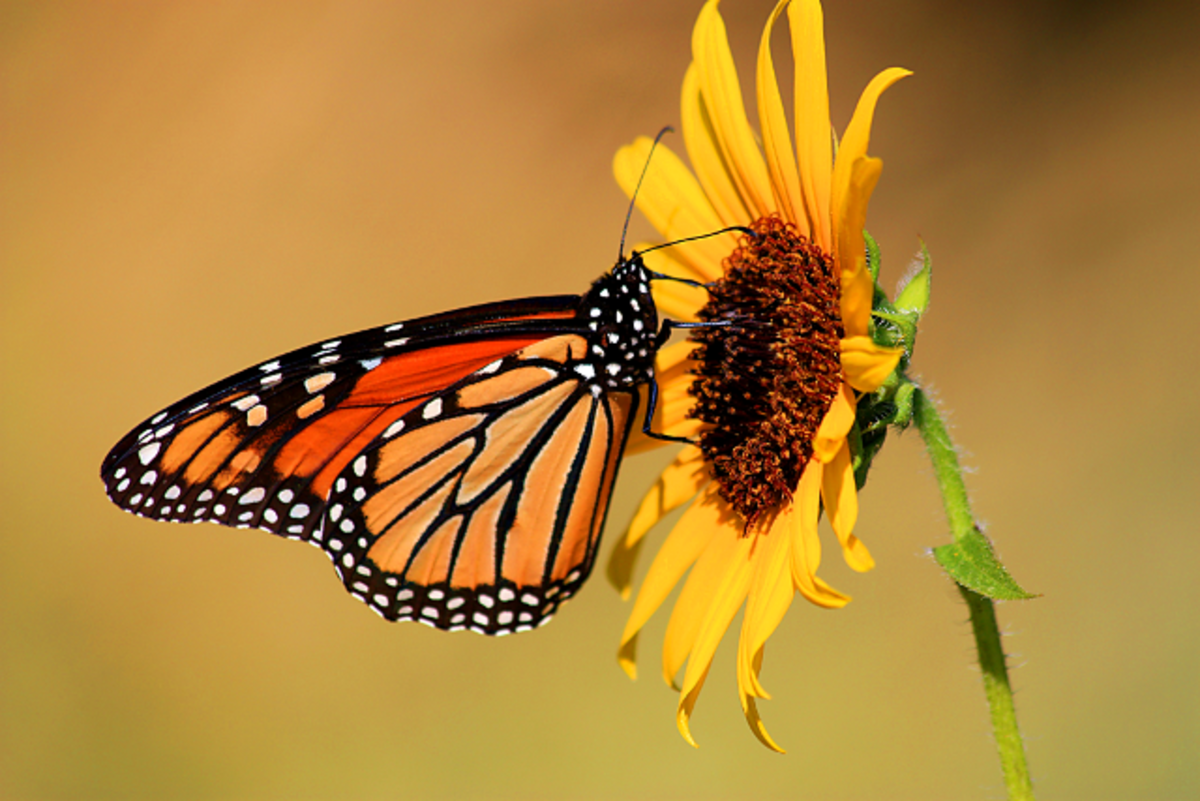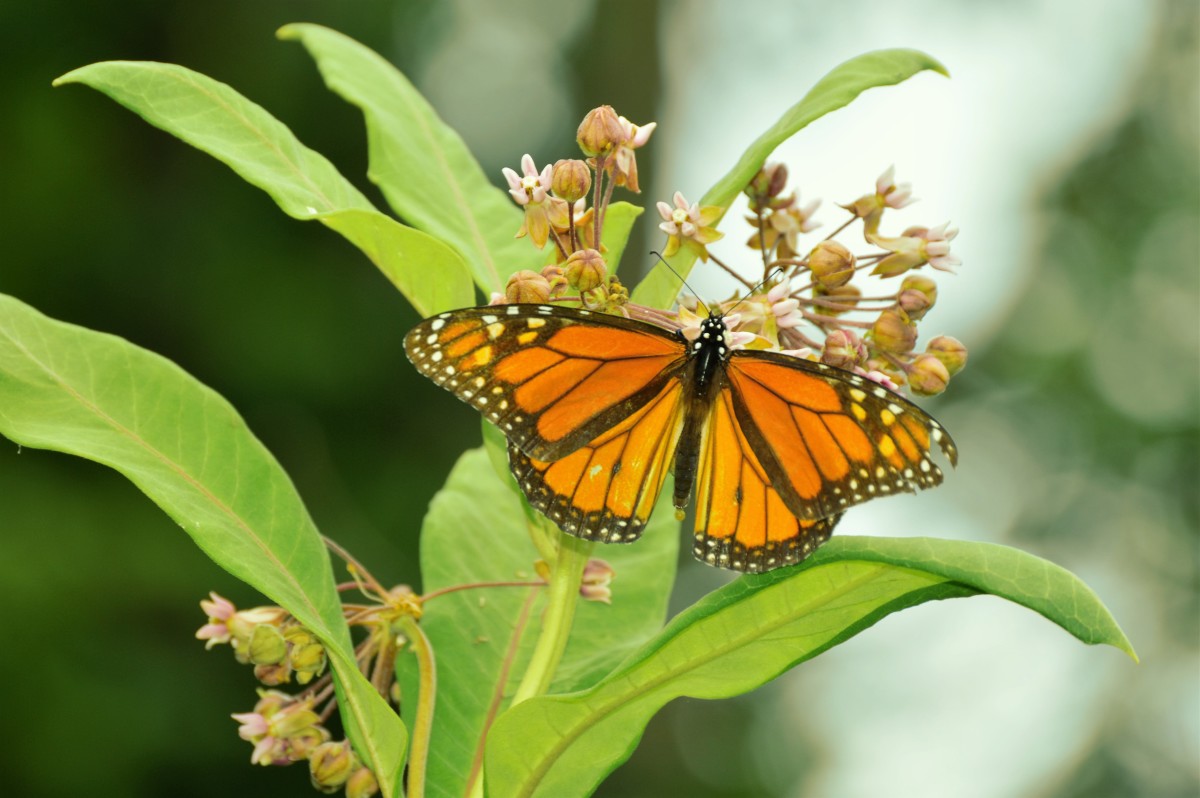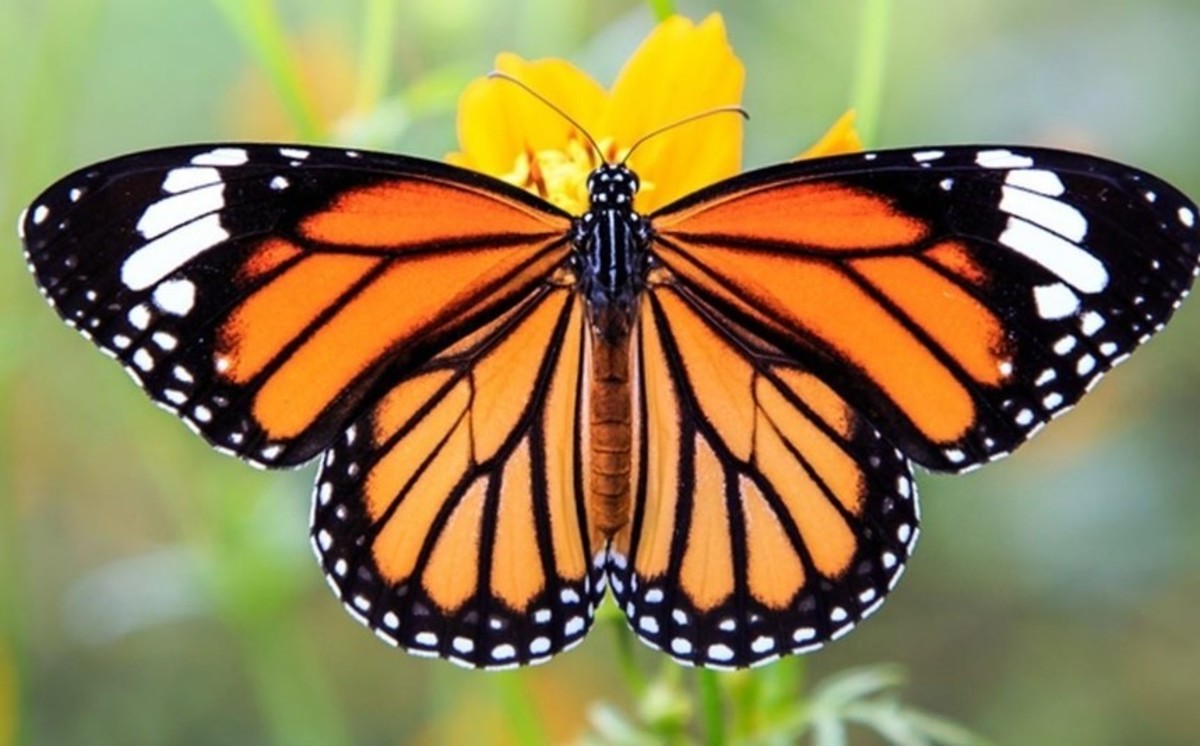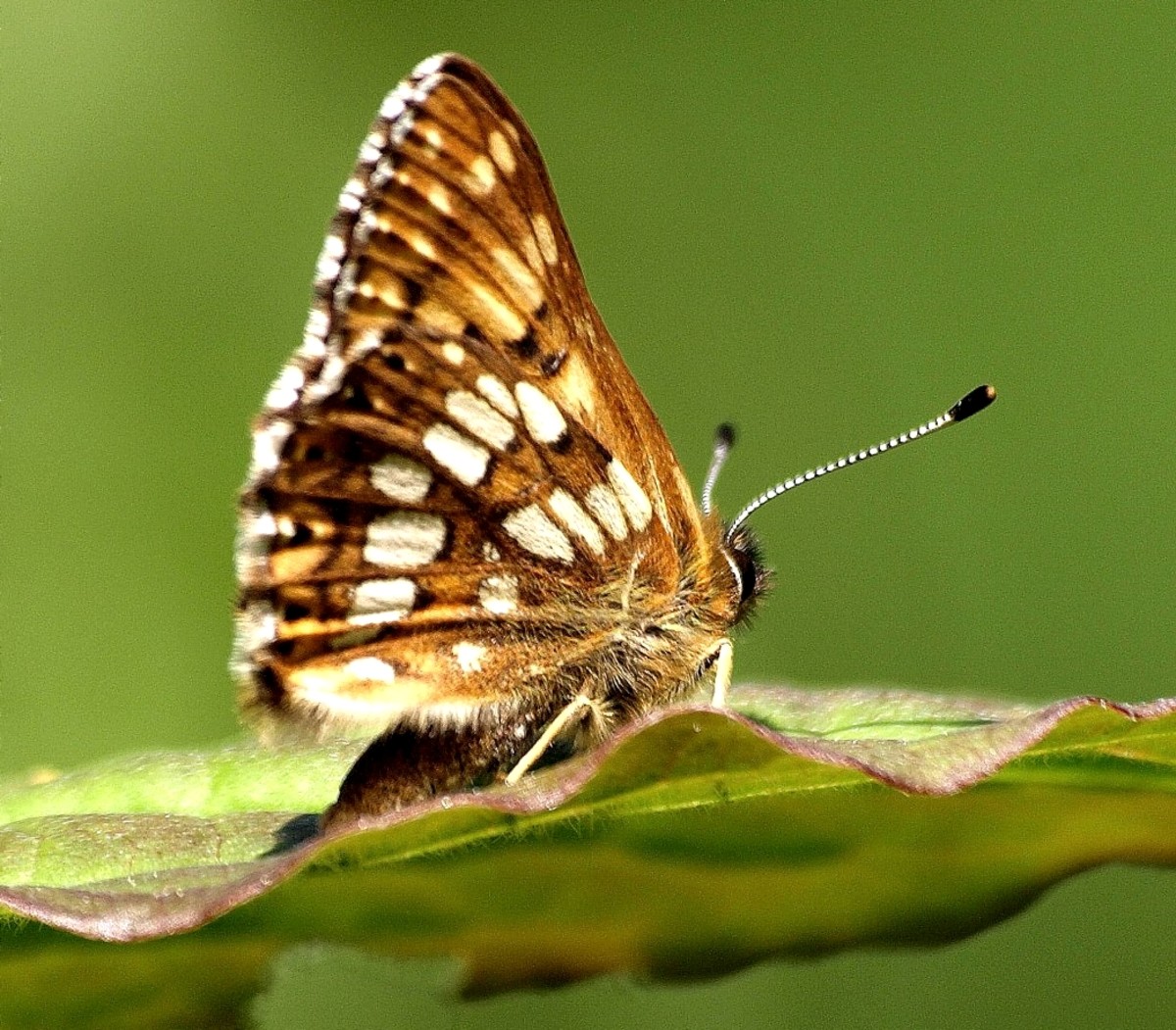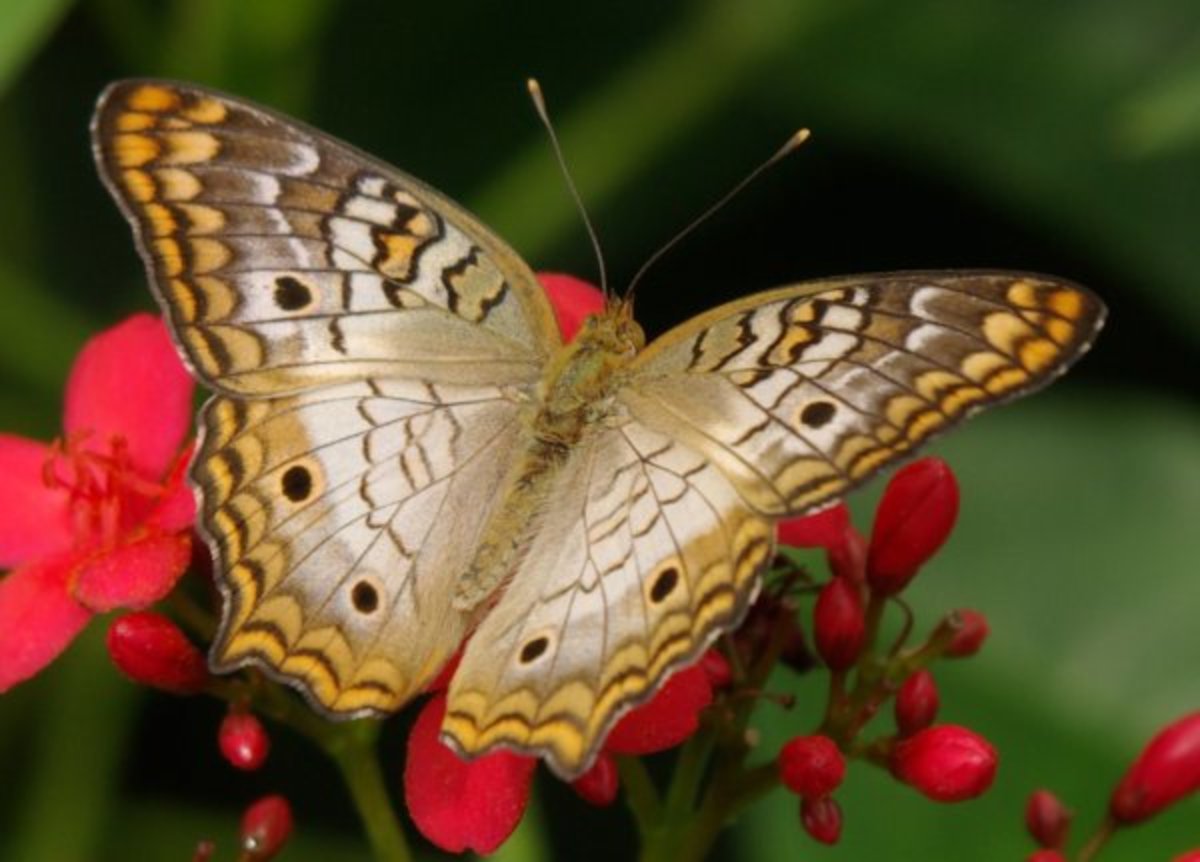- HubPages»
- Education and Science»
- Life Sciences»
- Entomology»
- Insects & Bugs
Buy Milkweed seeds and help Monarch Butterfly conservation
Why Monarch Butterflies need our help
Monarch butterflies (Danaus plexippus) are facing many problems in the world today. Pesticides, herbicides, habitat destruction and Climate Change are all taking a heavy toll but many people are doing what they can to help with Monarch Butterfly conservation, and an excellent way to aid the survival of these pretty butterflies is by growing Milkweed (Asclepias) species that the caterpillars feed on.
It is easy to buy Milkweed seeds on the Internet from popular sites like Amazon and eBay. There are well over 100 species of Milkweed and many have very pretty flowers that will help beautify your garden as well as being the food-plants of the Monarch Butterfly. It can be very rewarding to see our efforts in helping these magnificent insects actually helping them.
Monarch butterfly
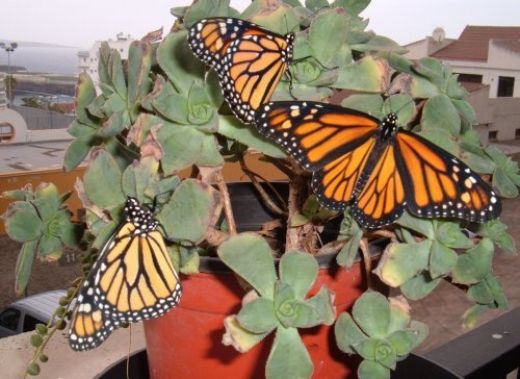
About the Monarch Butterfly
The Monarch is a very large butterfly in the Nymphalidae (sub-family Danainae) and has colourful reddish-orange wings that are boldly marked with black veins and have white dots on the black borders and wing-tips. It has a wingspan of 8.9–10.2 cm(3½–4 in) and the males are larger than the females. They have a black spot on each of their back-wings but the females are generally darker in colour and have broader black veins.
Monarch Butterflies live in North America, Bermuda, Australia, New Zealand, the Canary Islands, Azores and Madeira. It also can be found in some Mediterranean countries and migrates to parts of Europe, occasionally reaching the UK but it cannot survive long there because the food-plant does not grow in Britain and the winters are too severe.
In America the Monarch makes an incredible migration that takes it from the lower parts of Canada and the most northerly American States all the way down to California and Mexico where it overwinters. The butterflies leave their northern range in autumn and fly south. In spring they reverse their journey and fly northwards.
In places like the Canary Islands, where the temperature stays above freezing all year around, they have no need of migration and stay put. These butterflies that do not migrate and overwinter do not live anywhere near as long though and breed all year round with one generation following the last one. The overwintering butterflies get a longer lifecycle because it is necessary to their survival as a species. They have evolved to find a way of getting through the colder months so they can start new populations in the following year when spring brings warmer weather and the plants they need begin to grow again.
Monarch caterpillars
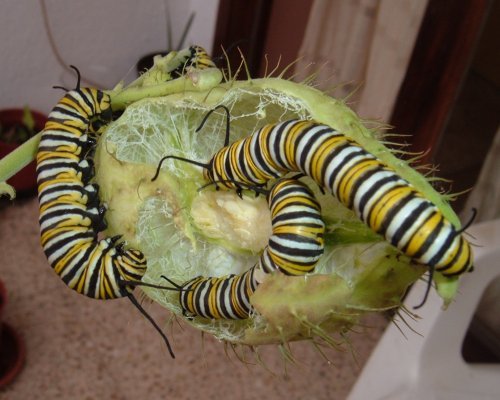
Warning colours
Monarch Butterflies have what are known as warning colours that mean that they taste very bad and are poisonous. The caterpillars are striped with yellow, black and white stripes and they absorb poisons from the Milkweed and store these toxins in their bodies for further use as adults. The chrysalises are a beautiful shade of jade-green and have tiny metallic gold dots as well. Monarch caterpillars can only eat Milkweed species so are limited in their range by the availability of the plants. The Monarch Butterfly was only able to colonise Tenerife and the Canary Islands because the Tropical or Scarlet Milkweed (A. curassavica) has been cultivated as an ornamental garden flower. The more gardens that have this plant the better it is for the Monarchs.
Monarch caterpillars only eat milkweed leaves.
Buy Milkweed seeds
Tropical Milkweed

Monarch conservation poll
Would you like to help save Monarch butterflies?
Milkweed species to look out for and buy
The most commonly grown and sold species of Milkweed that is used to attract Monarchs and to feed the caterpillars is the Scarlet Milkweed but this species needs a subtropical climate to do well. It can be grown in colder places in the summer of course. In North America there are species of Milkweed that grow all the way up the northern States and many of these are hardy.
Other species that are readily available as Milkweed seeds to buy include the Common Milkweed (A syriaca) which as pink flowers and the Swamp Milkweed (A. incarnata). This last named species is a perennial plant that grows back in spring and is found throughout many parts of North America and likes a damp soil as its name suggests. It has dark pink to mauve flowers.
The Butterfly Weed or Indian Paintbrush (A. tuberosa) is another popular perennial North American species of Milkweed that has orange-red flowers and, as its name suggests, butterflies love it.
The Swan Plant (A. fruticosa) is a tall plant that has creamy-white flowers and large inflated seed-pods that bear some resemblance to the bird it is named after because they have a pointed beak-like projection. This species is found in many countries where it has become naturalised.
Browse online searching for the keywords “milkweed seeds” and you will find plenty of other sites besides Amazon that can supply the seeds. Some of them offer many different species of Milkweed and there are many colours and varieties to choose from.
Monarch Butterflies don’t mind what types you grow. The adults will happily feed on the nectar from the flowers, as will many other pollinating insects and other butterfly species.
The mother butterflies will lay eggs on the plants and the more you grow the better because they are very hungry caterpillars and will make short work of a Milkweed plant. Fortunately these plants regenerate easily even after being stripped of their leaves. The Monarch caterpillars will also eat the flowers, seed-pods and stems as well.
Milkweed seeds have fluffy hairs attached to them that aid in their wind-blown dispersal and you may find them self-seeding around your garden once you have plants growing well. Most Milkweed species are easy enough to germinate and grow and you will get a lot of pleasure from seeing them and knowing that you are helping a very beautiful type of butterfly.
© 2013 Steve Andrews


